-
 Bitcoin
Bitcoin $108,562.4295
0.46% -
 Ethereum
Ethereum $2,533.9553
1.52% -
 Tether USDt
Tether USDt $1.0002
-0.01% -
 XRP
XRP $2.2542
2.23% -
 BNB
BNB $662.4567
1.48% -
 Solana
Solana $151.4114
3.48% -
 USDC
USDC $0.9999
0.00% -
 TRON
TRON $0.2860
0.91% -
 Dogecoin
Dogecoin $0.1685
3.72% -
 Cardano
Cardano $0.5809
1.63% -
 Hyperliquid
Hyperliquid $39.2916
1.85% -
 Sui
Sui $2.8874
0.85% -
 Bitcoin Cash
Bitcoin Cash $496.5801
2.72% -
 Chainlink
Chainlink $13.3582
2.48% -
 UNUS SED LEO
UNUS SED LEO $9.0279
0.07% -
 Avalanche
Avalanche $18.0773
2.30% -
 Stellar
Stellar $0.2426
3.05% -
 Toncoin
Toncoin $2.9086
6.01% -
 Shiba Inu
Shiba Inu $0.0...01170
2.97% -
 Hedera
Hedera $0.1587
3.47% -
 Litecoin
Litecoin $87.4596
1.13% -
 Monero
Monero $317.0425
0.73% -
 Polkadot
Polkadot $3.3778
1.90% -
 Dai
Dai $0.9999
-0.01% -
 Ethena USDe
Ethena USDe $1.0001
-0.01% -
 Bitget Token
Bitget Token $4.4095
0.63% -
 Uniswap
Uniswap $7.3593
6.80% -
 Pepe
Pepe $0.0...09910
3.64% -
 Aave
Aave $274.7388
2.68% -
 Pi
Pi $0.4607
0.48%
What are the deposit and withdrawal limits of Coinbase?
Coinbase's deposit and withdrawal limits vary based on account verification, payment methods, and the cryptocurrency involved, with options to increase limits through verification and regular use.
Apr 14, 2025 at 11:15 pm
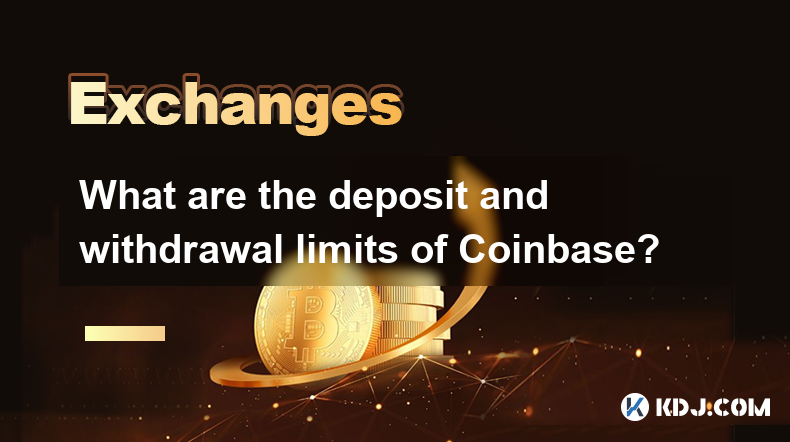
Coinbase, one of the leading cryptocurrency exchanges, offers a range of services for buying, selling, and storing digital currencies. Understanding the deposit and withdrawal limits on Coinbase is crucial for users who want to manage their funds effectively. These limits can vary based on several factors, including the user's account level, the method of payment, and the type of cryptocurrency involved.
Factors Affecting Deposit and Withdrawal Limits
The limits on Coinbase are influenced by various factors. Account verification level plays a significant role, as higher verified accounts tend to have higher limits. Additionally, the type of payment method used for deposits and withdrawals, such as bank transfers, credit/debit cards, or cryptocurrency transfers, can affect the limits. Lastly, the specific cryptocurrency being transacted also impacts the limits, with different cryptocurrencies having different thresholds.
Deposit Limits on Coinbase
When it comes to depositing funds into your Coinbase account, the limits can vary significantly. For bank transfers, users typically start with a weekly limit of around $250, which can increase to $25,000 per week once the account is fully verified. Credit and debit card deposits usually have a daily limit of $200 and a weekly limit of $1,000. Cryptocurrency deposits are generally unlimited, but they must comply with Coinbase's policies and regulations.
Withdrawal Limits on Coinbase
Withdrawal limits on Coinbase are also dependent on the method used. For bank withdrawals, the weekly limit starts at around $10,000 for new accounts and can go up to $50,000 for fully verified accounts. Cryptocurrency withdrawals are subject to network fees and may have different limits depending on the cryptocurrency, but they are generally more flexible than fiat withdrawals. Withdrawals to credit/debit cards are not supported on Coinbase.
How to Increase Your Limits on Coinbase
If you find the initial limits on Coinbase too restrictive, there are steps you can take to increase them. Here’s how you can do it:
- Verify your identity: Complete the identity verification process on Coinbase. This involves providing personal information and documents such as a driver’s license or passport.
- Link a bank account: Adding a verified bank account can help increase your deposit and withdrawal limits.
- Increase account activity: Regularly using Coinbase and maintaining a good transaction history can lead to higher limits over time.
- Contact customer support: If you need higher limits for specific transactions, you can reach out to Coinbase’s customer support for assistance.
Understanding Cryptocurrency-Specific Limits
Different cryptocurrencies on Coinbase have their own set of limits. For example, Bitcoin (BTC) and Ethereum (ETH) typically have higher limits compared to less popular cryptocurrencies like Litecoin (LTC) or Bitcoin Cash (BCH). It’s important to check the specific limits for each cryptocurrency on Coinbase’s website or app.
Navigating Coinbase’s User Interface for Limits
To view and manage your deposit and withdrawal limits on Coinbase, follow these steps:
- Log into your Coinbase account: Use your credentials to access your account.
- Navigate to the settings: Click on your profile picture or name at the top right corner, then select “Settings.”
- Go to the ‘Limits’ section: Under the settings menu, you will find a tab labeled “Limits.” Click on it to see your current deposit and withdrawal limits.
- Review and adjust: Here, you can see your current limits and any steps you need to take to increase them, such as completing additional verification steps.
Payment Method-Specific Limits
Each payment method on Coinbase has its own set of limits. Bank transfers are typically the most flexible, with higher limits for both deposits and withdrawals. Credit and debit card transactions have lower limits and are primarily used for deposits. Cryptocurrency transfers have the least restrictions but are subject to network fees and Coinbase’s transaction policies.
Real-World Examples of Coinbase Limits
To illustrate how these limits work in practice, consider the following examples:
- New User Scenario: A new user with a basic verified account wants to deposit funds. They can deposit up to $250 per week via bank transfer and $200 per day via credit/debit card.
- Experienced User Scenario: An experienced user with a fully verified account can deposit up to $25,000 per week via bank transfer and withdraw up to $50,000 per week.
- Cryptocurrency Transactions: A user wants to withdraw Bitcoin. They can typically withdraw up to 10 BTC per day, depending on their account status and the current network conditions.
Frequently Asked Questions
Q: Can I bypass Coinbase’s limits by using multiple accounts?
A: No, Coinbase has strict policies against creating multiple accounts to bypass limits. Doing so can result in account suspension or closure.
Q: How long does it take for Coinbase to increase my limits after verification?
A: The time it takes for limits to increase after verification can vary, but it typically takes a few days to a week for the changes to reflect in your account.
Q: Are there any fees associated with increasing my limits on Coinbase?
A: No, Coinbase does not charge fees specifically for increasing your limits. However, you may incur fees for certain transactions, such as bank transfers or cryptocurrency withdrawals.
Q: Can I use a different payment method to increase my withdrawal limits?
A: While using different payment methods can affect your limits, it does not directly increase them. The primary way to increase limits is through account verification and regular use of the platform.
Disclaimer:info@kdj.com
The information provided is not trading advice. kdj.com does not assume any responsibility for any investments made based on the information provided in this article. Cryptocurrencies are highly volatile and it is highly recommended that you invest with caution after thorough research!
If you believe that the content used on this website infringes your copyright, please contact us immediately (info@kdj.com) and we will delete it promptly.
- Altcoins in the Spotlight: What's Trending Now?
- 2025-07-07 02:45:12
- Pepe Coin's Plunge: Is the Frog Coin Ready to Bounce Back, or is Little Pepe the New Big Bet?
- 2025-07-07 02:47:22
- Sports Tokens: Market Cap Predictions for July 2025
- 2025-07-07 02:45:12
- DeFi, AI, and Crypto Resilience: Navigating the Future of Finance
- 2025-07-07 02:45:14
- Dogwifhat, Shiba Inu, and the Crypto Scene: What's Hot and What's Not?
- 2025-07-07 02:47:08
- Whales, Fartcoin, and Price Dips: What's the Deal?
- 2025-07-07 02:47:09
Related knowledge
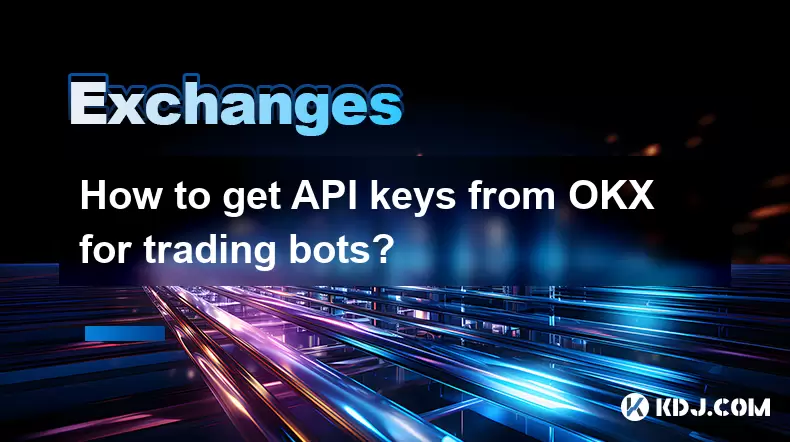
How to get API keys from OKX for trading bots?
Jul 03,2025 at 07:07am
Understanding API Keys on OKXTo interact with the OKX exchange programmatically, especially for building or running trading bots, you need to obtain an API key. An API (Application Programming Interface) key acts as a secure token that allows your bot to communicate with the exchange's servers. On OKX, these keys come with customizable permissions such ...
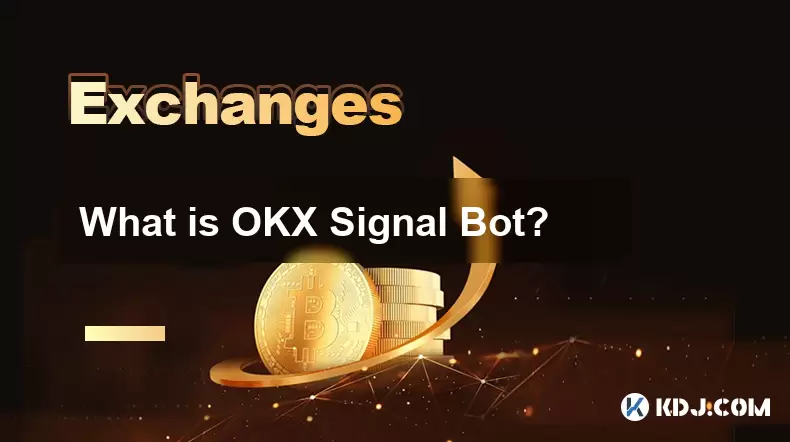
What is OKX Signal Bot?
Jul 02,2025 at 11:01pm
Understanding the Basics of OKX Signal BotThe OKX Signal Bot is a feature within the OKX ecosystem that provides users with automated trading signals and execution capabilities. Designed for both novice and experienced traders, this bot helps identify potential trading opportunities by analyzing market trends, technical indicators, and historical data. ...
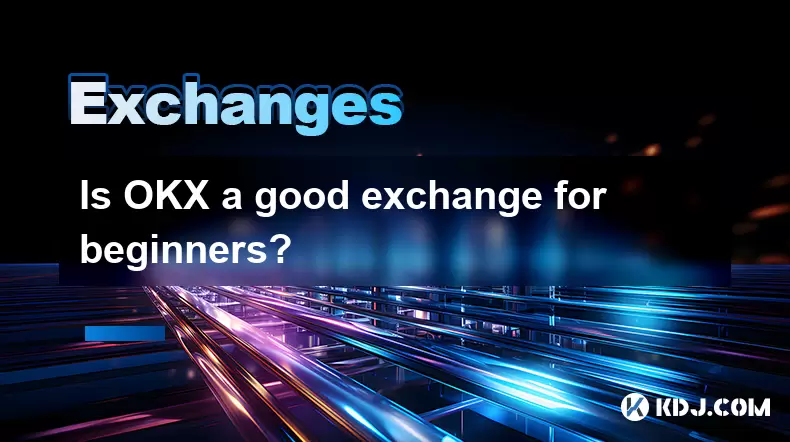
Is OKX a good exchange for beginners?
Jul 03,2025 at 05:00pm
What Is OKX and Why Is It Popular?OKX is one of the leading cryptocurrency exchanges globally, known for its robust trading infrastructure and a wide variety of digital assets available for trading. It supports over 300 cryptocurrencies, including major ones like Bitcoin (BTC), Ethereum (ETH), and Solana (SOL). The platform has gained popularity not onl...
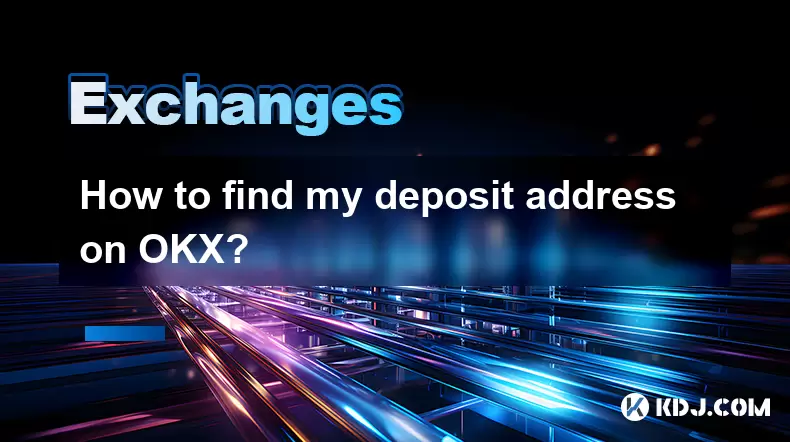
How to find my deposit address on OKX?
Jul 06,2025 at 02:28am
What is a Deposit Address on OKX?A deposit address on OKX is a unique alphanumeric identifier that allows users to receive cryptocurrencies into their OKX wallet. Each cryptocurrency has its own distinct deposit address, and using the correct one is crucial to ensure funds are received properly. If you're looking to transfer digital assets from another ...

Can I use a credit card to buy crypto on OKX?
Jul 04,2025 at 04:28am
Understanding OKX and Credit Card PaymentsOKX is one of the leading cryptocurrency exchanges globally, offering a wide range of services including spot trading, derivatives, staking, and more. Users often wonder whether they can use a credit card to buy crypto on OKX, especially if they are new to the platform or looking for quick ways to enter the mark...
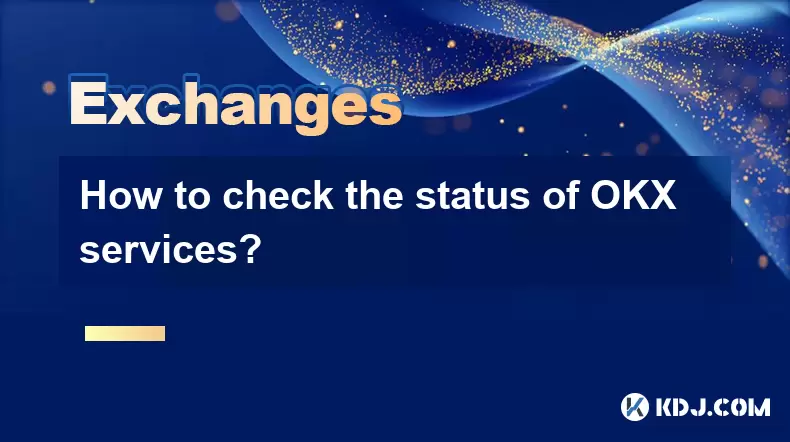
How to check the status of OKX services?
Jul 02,2025 at 11:14pm
What is OKX, and Why Checking Service Status Matters?OKX is one of the world’s leading cryptocurrency exchanges, offering services such as spot trading, futures trading, staking, and more. With millions of users relying on its platform for daily transactions, it's crucial to know how to check the status of OKX services. Downtime or maintenance can affec...

How to get API keys from OKX for trading bots?
Jul 03,2025 at 07:07am
Understanding API Keys on OKXTo interact with the OKX exchange programmatically, especially for building or running trading bots, you need to obtain an API key. An API (Application Programming Interface) key acts as a secure token that allows your bot to communicate with the exchange's servers. On OKX, these keys come with customizable permissions such ...

What is OKX Signal Bot?
Jul 02,2025 at 11:01pm
Understanding the Basics of OKX Signal BotThe OKX Signal Bot is a feature within the OKX ecosystem that provides users with automated trading signals and execution capabilities. Designed for both novice and experienced traders, this bot helps identify potential trading opportunities by analyzing market trends, technical indicators, and historical data. ...

Is OKX a good exchange for beginners?
Jul 03,2025 at 05:00pm
What Is OKX and Why Is It Popular?OKX is one of the leading cryptocurrency exchanges globally, known for its robust trading infrastructure and a wide variety of digital assets available for trading. It supports over 300 cryptocurrencies, including major ones like Bitcoin (BTC), Ethereum (ETH), and Solana (SOL). The platform has gained popularity not onl...

How to find my deposit address on OKX?
Jul 06,2025 at 02:28am
What is a Deposit Address on OKX?A deposit address on OKX is a unique alphanumeric identifier that allows users to receive cryptocurrencies into their OKX wallet. Each cryptocurrency has its own distinct deposit address, and using the correct one is crucial to ensure funds are received properly. If you're looking to transfer digital assets from another ...

Can I use a credit card to buy crypto on OKX?
Jul 04,2025 at 04:28am
Understanding OKX and Credit Card PaymentsOKX is one of the leading cryptocurrency exchanges globally, offering a wide range of services including spot trading, derivatives, staking, and more. Users often wonder whether they can use a credit card to buy crypto on OKX, especially if they are new to the platform or looking for quick ways to enter the mark...

How to check the status of OKX services?
Jul 02,2025 at 11:14pm
What is OKX, and Why Checking Service Status Matters?OKX is one of the world’s leading cryptocurrency exchanges, offering services such as spot trading, futures trading, staking, and more. With millions of users relying on its platform for daily transactions, it's crucial to know how to check the status of OKX services. Downtime or maintenance can affec...
See all articles

























































































